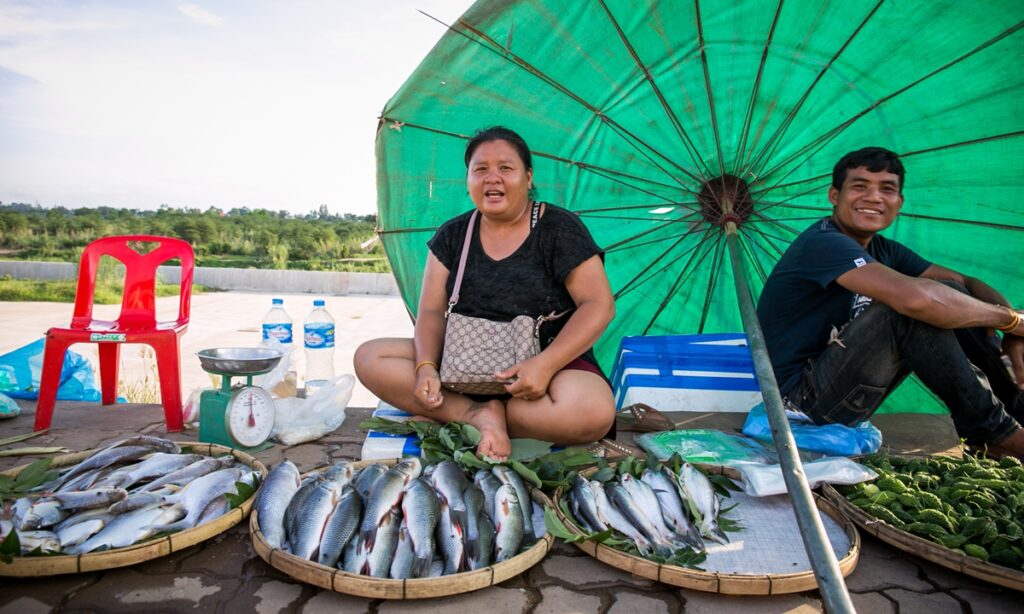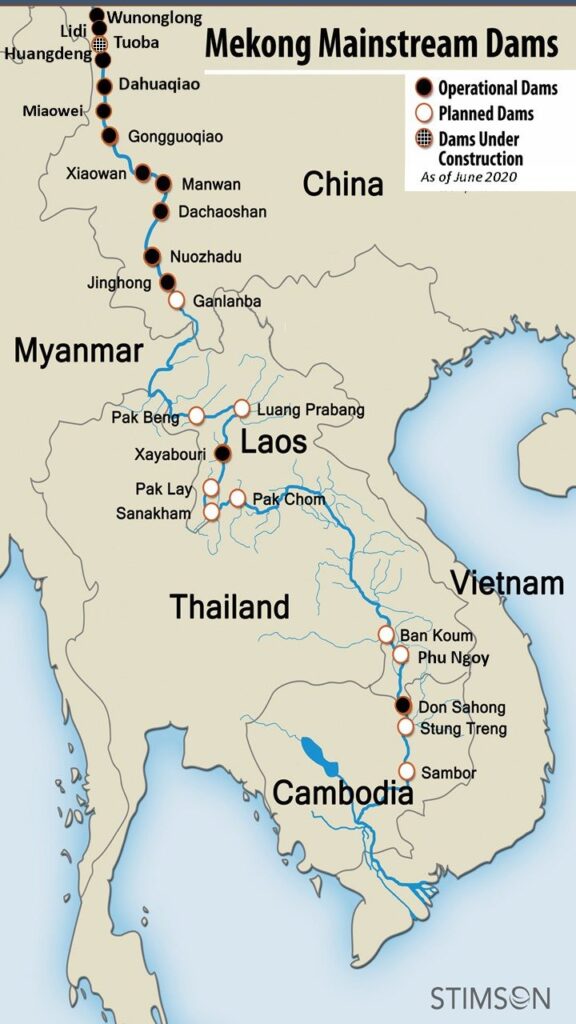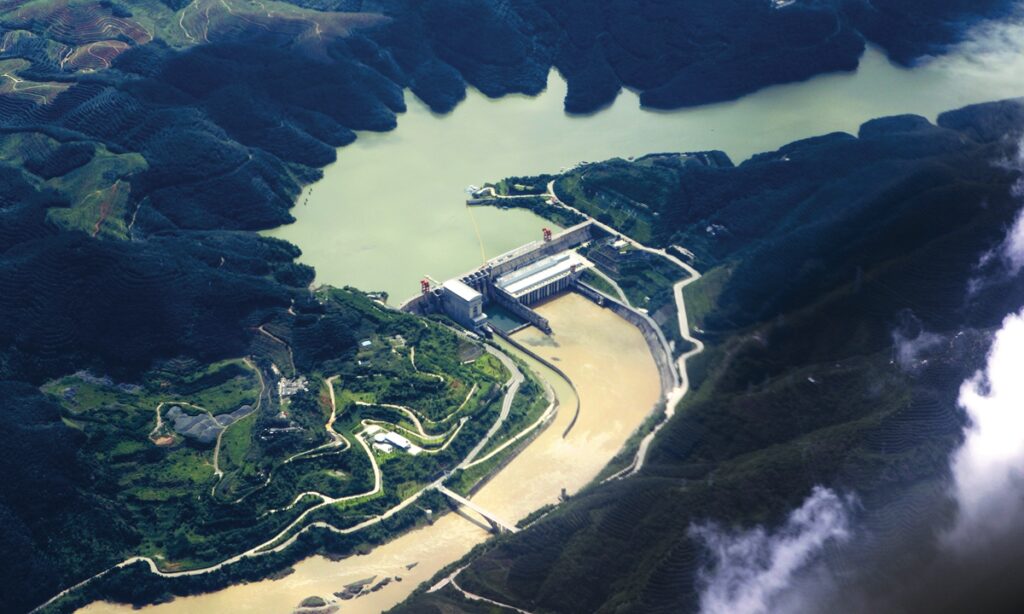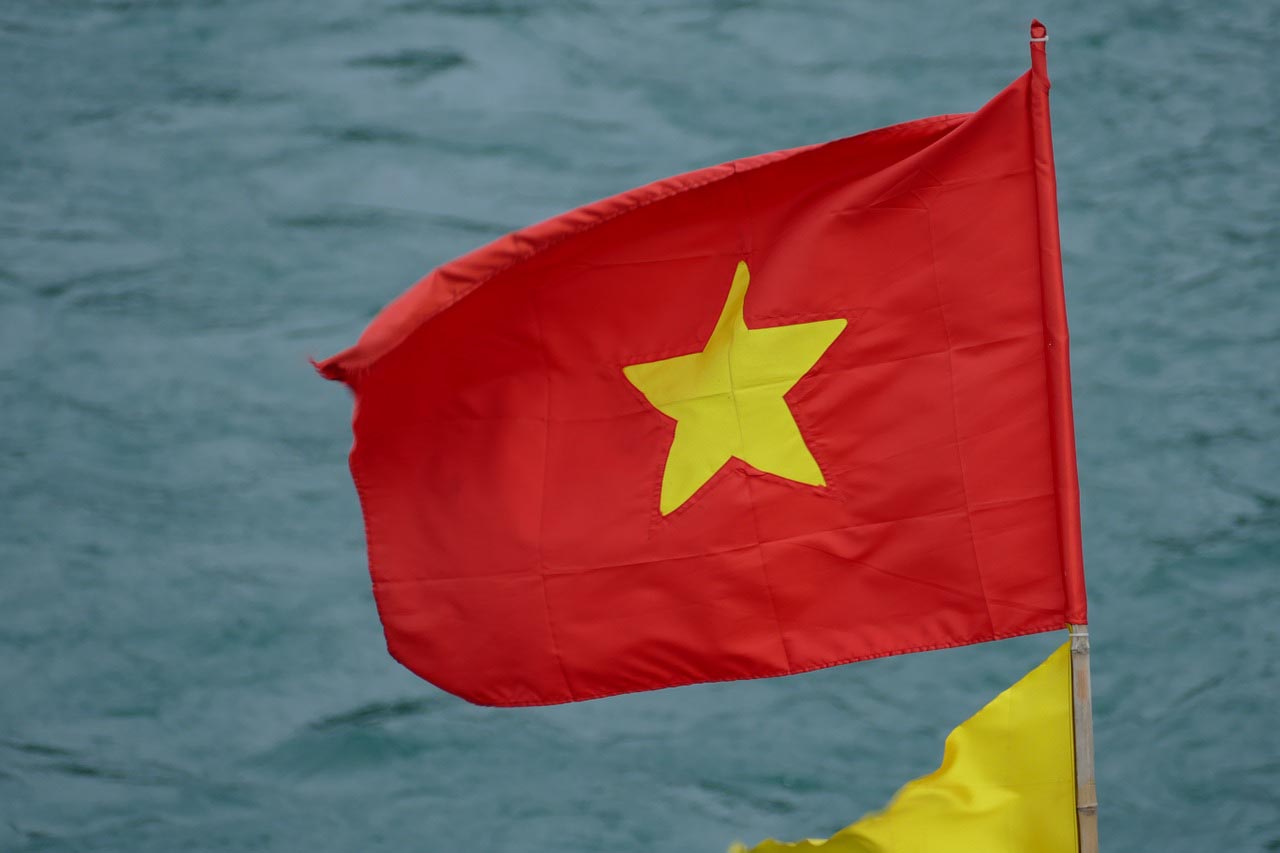Dam building in Southeast Asia has had detrimental impacts on the environment and economies of communities that rely on transboundary rivers for food and economic stability. Estimated at a length of 4,909 km (3,050 mi) and responsible for 475 km3 (114 cu mi) of water outflow annually, the Mekong River is the twelfth longest river in the world and the sixth longest river in Southeast Asia. Starting at Lasagongma Spring located in the plateaus of Tibet, it flows through the steep canyons of China (the Upper Basin), through Myanmar, Laos, Thailand, Cambodia, and Vietnam (the Lower Basin), then flows through channels of distributaries, making up the Mekong Delta, and drains into the South China Sea. The World Wildlife Fund claims the river accounts for up to 25% of the global freshwater catch, provides up to 80% of all animal protein for communities near the river, and provides livelihoods for at least 60 million people.
Since 1988, a total of 247 bird species has been recorded near the wetlands of the Mekong, including species cuckoos, bulbuls, flowerpecks, woodpeckers, hornbills and barbets. 1,300 species of fish inhabit the Mekong River, including four of the world’s largest fish; the giant freshwater stingray, the Mekong giant catfish, and the giant pangasius, each respectively weighing up to 600kg, 350kg, and 300kg. Many threatened or critically endangered animals also call the Mekong River their home, including Irrawaddy dolphins, Siamese crocodiles, and the giant Ibis.
Not only is the Mekong River impressive in regards to its length and animal diversity, it also has enormous economic impacts on the countries that it runs through. Fisheries near the Mekong River are worth USD $2.5 billion per year making them crucial profit generators. However, dam building along the Mekong River has had negative impacts on the fish populations and the economies of the communities that rely on them, with much of the damage beginning in the Upper Mekong Basin in China. International organizations created to foster amicable relations between the Mekong countries face the challenge of mitigating hardships among the vulnerable communities that rely on the river.

A woman sells fish of the Mekong River at a market in Vientiane, Laos in October 2020. Image via Global Times.
Hydroelectric Dam Building
In 1992, China commissioned the Manwan Dam, the first of six large hydropower dams built on the Mekong River in the Yunnan province. In the Upper Basin, there are currently eleven hydropower dams, and plans to construct eleven more. Currently, the overall economic value of hydropower in the Upper Mekong Basin in China is estimated at USD $4 billion per year. The existing dams have the capacity to store as much water as the Chesapeake Bay, the largest estuary in the United States, with a surface area of 11,600 km/sq. These Upper Basin dams are responsible for generating massive amounts of electricity, and with the addition of the eleven future dams, total production capacity is estimated to jump to 31,605 megawatts, increasing from 21,310 MW. To put this into perspective, conventional coal powered generators have the capacity to produce the amount of electricity consumed by 400 to 900 homes in a year with just one megawatt.
China accounts for about half of the world’s total dams with most of their dams built on internal rivers, not transboundary ones, as their own internal rivers have been choked by dams and face rising levels of pollution that renders the water increasingly unusable. It is estimated that one-third of lakes and rivers in China are polluted to such levels that human consumption is not possible. This happens because dams alter the timing of river flows by withholding and then releasing water to generate power for peak demand periods, and the irregular releases destroy the natural flow of the river. Slower moving rivers are susceptible to temperature increases, which causes algae to bloom, decreasing the oxygen levels, and increasing pollution levels.
One of the main reasons why China is building dams is to shift from coal to hydropower. In 2015, China submitted a national climate plan to the United Nations with the goal of curbing emission gasses by or before 2030. This plan relies heavily on the shift from coal to non-fossil fuels, such as hydropower, which may incentivise China’s government to another round of dam building in order to reach its 2030 non-fossil fuel targets. China’s 2050 Roadmap aims to achieve that China could get almost 86% of power generation from renewable energy by 2050. In search of more hydropower, and in order to meet climate goals, China continues to turn to building dams along transboundary waterways and the Mekong.

Map of operational, planned, and dams under construction along the Mekong River as of June 2020. Image via Stimson.
Diplomatic History
In 1995, the governments of Cambodia, Laos, Vietnam and Thailand jointly established the Mekong River Commission (MRC) in order to strengthen transboundary water governance. Their goal is to promote and coordinate sustainable development and management of water within the Lower Basin countries. China declined to join as a full member; along with Myanmar, which has observer status, saying they prefer to negotiate any issues with the Mekong or water development on a bilateral basis. The MRC is primarily funded by Western countries and since its origin, the MRC has experienced shortcomings such as struggling to ensure citizen participation in the communities that rely on the river.
https://www.high-endrolex.com/36
In 2015, China launched the Lancang-Mekong Cooperation (China uses the Chinese word Lancang to refer to the upstream section of the Mekong). The goals of the LMC are similar to the MRC, their priorities are interconnectivity, industrial capacity, cross-border economics, water resources, and poverty reduction. However, the LMC is a bilateral organization, headquartered in Beijing, and primarily funded by China. Xu Liping, a senior research fellow at the National Institute of International Strategy under the Chinese Academy of Social Science, says that the structure of the LMC is to promote interaction among high level officials in order to boost trade deals between China, Myanmar, Laos, Thailand, Laos, and Vietnam. The endorsement and participation from all six Mekong countries is significant because it allows China to possess a stronger degree of control over the Mekong River and have greater control over future dam buildings.
International Critique
China’s dams are often built by companies that retain strong ties to the Chinese government. The companies are mostly state-owned enterprises corportized from former government affiliations. In January 2021, Thitinan Pongsudhirak, a political science professor at Bangkok’s Chulalongkorn University, stated that he believes China is deliberately withholding water from downstream countries. He has claimed “It’s very clear that the Chinese are using the dams for political leverage.” There is no official statement at this time to back this theory but nevertheless, due to the natural geography of the river, China has faced criticism and accusations of manipulating water supplies to downstream countries. International Rivers, a California based advocacy group, claimed, “the increasing frequency of drought in the lower basin tracks closely to the way China restricts water upstream during the dry season.”
A study conducted by Eyes on Earth, a US based climate consultant, showed China’s dams blocked an unprecedented amount of water from entering the lower Mekong. The amount of water withheld was so large that, for the first time since modern records have been kept, there was no monsoon-driven rise in water levels in Chiang Saen, Thailand, located just over the Chinese border. Eyes on Earth also found data supporting that while harsh droughts persisted downstream, China’s section of the river was wetter than usual. The upper Mekong Basin, that ends on the Chinese border, reached above average amounts of water.
Furthermore, the LMC being created by China and based in Beijing, leads to suspicion China may hold more sway within the LMC. Within the Mekong region, China’s economy is vastly superior compared to the neighboring countries, thereby China has the means to contribute more money to the LMC and the ability to finance dams in other countries. The Lower Sesan 2, built in Cambodia in 2018, was Cambodia’s largest hydropower dam at the time, costing USD $780 million, and was largely backed by Chinese funding. The 400-megawatt dam was criticized by environmentalists and is estimated to have resettled 5,000 people, mostly from marginalized indigenous groups. Going forward, it is necessary for the LMC and the Chinese government to address these critics. The LMC will walk a tricky tightrope between ensuring a balance of power and the risk of losing Chinese funding.
Environment and Economic Impacts Along the River
Setting aside tensions towards China and allocations of water restriction, dam building in general has detrimental environmental effects and economic repercussions. As stated previously, the Mekong River is crucial for the survival of at least 60 million individuals who rely on the river for daily food or economic opportunity.
One environmental impact can be seen through the fish population in Thailand. In 1994, Thailand completed the construction of the Pak Mun Dam on the Mun River, a tributary of the Mekong. Each year approximately 100 species of fish migrate up the Mun River between February and June for spawning and feeding before migrating back downstream in October and November. About 60 communities living along the river rely on this yearly migration for their food security and livelihoods. However, the construction of Pak Mun Dam has significantly reduced the fish population. In 1995, the residents of these communities received compensation for the hardship they endured during the construction of the dam and were promised that fish stocks would recover, yet, unfortunately fish stocks continue to remain depleted and it became obvious to the dependent communities that their previous way of life was forever altered by the dams.

Jinghong Dam and hydropower station, seen here in 2013: China slashed the Mekong River’s flow from this dam in January, leaving Southeast Asian communities downstream to cope with falling water levels during the dry season. Image via Global Times.
Jinghong Dam and hydropower station, seen here in 2013: China slashed the Mekong River’s flow from this dam in January, leaving Southeast Asian communities downstream to cope with falling water levels during the dry season.
In more recent Thailand history, in July 2019, mainstream water levels fell so far in Thailand that irrigation pumps could not reach it and the Thai government had to mobilize its army to provide relief. Relief included sending army water trucks to drought-stricken areas and working with agriculture officials to make artificial rain near reservoirs. At the start of autumn, Tonle Sap Lake, often referred to as the Mekong’s heartbeat, usually fills with monsoon waters for as long as five months and provides Cambodia with as much as 70% of their protein. In 2019, the lake filled for just five weeks and provided a fraction of the normal 500,000 tons of food. To exacerbate the situation, the region was already suffering from the worst drought in recorded history.
Further economic loss can be seen through a 2010 report, where the MRC estimated that Laos was likely to receive 70% of export revenues generated by the 12 dam projects, equal to USD $2.6 billion. For at least the first 25 years of operation, however, the developers and financiers of the projects will receive the majority, between 69% and 74% of gross revenues. This leaves little compensation to the Laotians who’s lives are unalterably changed by the construction of dams in their territory. The damage dams could do to their food supply and livelihoods is a large price to pay for projects that do not guarantee significant returns.
Finally, Vietnam is the southernmost country touched by the Mekong and the one most likely to be negatively impacted by upstream development. Sediment from upstream is vital for Vietnam’s rice production because it replenishes soil nutrients. The Mekong delta region is home to 18.6 million people, about one-fifth of Vietnam’s total population, and accounts for more than half of the country’s rice and fruit production. About 60% of the country’s fish production is also located in the delta. Dams block upstream sediment from flowing downriver, consequentially hindering Vietnam’s rice production. Additionally, without a strong outflow of water into the South China Sea, saltwater is likely to seep further upstream into the delta, polluting water and turning rendering soil infertile.
Conclusion
Governments are incentivized to build dams in order to profit from hydropower as well as meet future climate goals. However, dam building negatively affects today’s environment, as seen by the large reduction in the fish population of the Mekong River. Thailand, Vietnam, and Cambodia have all faced irreversible economic and environmental damage due to dam construction along the Mekong River, damages that are often disproportionately felt by indigenous communities that live near the river. The Mekong River Commission and the Lancang-Mekong Cooperation were both established with the goal of fostering interconnectivity, economic cross-relations, and swift negotiations between the countries reliant on the Mekong. However, both organizations leave lots to be desired, the MRC unable to gain endorsement from all six relevant countries and struggling with citizen participation, and the LMC’s need to balance power between participating countries amidst allegations of China restricting water. As the global temperature continues to increase, it is crucial for all countries within the Mekong region to cooperate and prioritize water resources, while being cautious of future dam building and sensitive to the negative environmental and economic impacts dam building thrusts onto the communities that depend on the river the most.
Kayla Kingseed hails from the United States and is pursuing her Masters in International Trade Finance and Management at Yonsei GSIS. Her passion lies in international relations and the interaction of socio-economic factors between institutions, policy analytics, and maximizing effective altruism. Kayla comes from a background in financial mathematics and has also worked within the IT sector specializing in cyber security education. She is an avid rock climber, cat lover, and enjoys immersing herself in art, music, and the experience of cuisines from all over the world.
- “I Love My Body”: Hwasa and Female Empowerment in K-Pop and Korean Society - May 6, 2025
- English Fever in South Korea - February 24, 2025
- South Korea’s Medical School Expansion – Cure Worse than the Disease? - October 20, 2024






